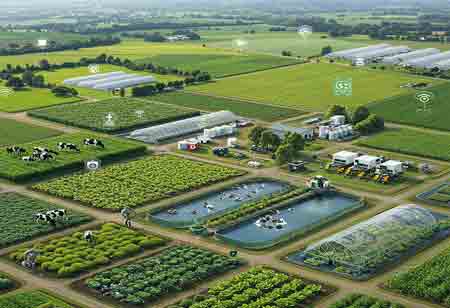Thank you for Subscribing to Agri Business Review Weekly Brief
Agribusiness Diversification Driving Change Across APAC
Agribusiness in APAC is expanding beyond traditional crop production, driven by shifting consumer demand, climate-related risks, and the pursuit of higher profits. Despite market and financial challenges, growth is emerging in sectors such as livestock, aquaculture, horticulture, and value-added agr

By
Agri Business Review | Thursday, October 30, 2025
Stay ahead of the industry with exclusive feature stories on the top companies, expert insights and the latest news delivered straight to your inbox. Subscribe today.
Fremont, CA: The Asia-Pacific (APAC) region stands as a major global agricultural hub, supplying food to a large share of the world’s population. Historically, the sector has focused on staple crops such as rice, wheat, and maize. Today, however, shifting consumer preferences, climate change challenges, and the drive for higher profitability and sustainability are accelerating a trend toward agribusiness diversification. This shift involves moving beyond conventional crop cultivation to embrace a broader range of activities across the agricultural value chain.
Drivers of Diversification in APAC Agribusiness
Agribusinesses are shifting towards a more diversified landscape due to changing consumer demand, climate change, market volatility, government policies, technological advancements, and increased profitability. Consumers increasingly demand higher-value food products, such as fruits, vegetables, livestock, dairy, and processed foods. Climate change and resource constraints in the region are reducing reliance on single crops, while diversification can help stabilize income streams. Government policies and support promote agricultural diversification to enhance food security and sustainable practices. Technological advancements, such as precision and controlled environment agriculture, enable the production of a broader range of crops and products. Diversification into higher-value products and processing activities can also increase profitability for farmers and agribusinesses.
Avenues for Diversification Beyond Crop Production
Agribusinesses in APAC are diversifying their operations by integrating livestock and dairy farming, aquaculture, horticulture, agroforestry, food processing and value addition, agri-tourism, and the production of inputs and services. These diversifications aim to increase income, enhance nutrient cycling, and create new market opportunities. Aquaculture presents a high-value alternative to traditional farming, while horticulture offers higher returns. Agroforestry provides non-timber forest products, while food processing and value addition increase profitability. Agri-tourism offers additional revenue streams and connects consumers with agriculture.
Agribusiness diversification in APAC is influenced by climate-smart agriculture, technology integration, sustainability, value chains, aquaculture, and biofuels. Climate-smart practices like drought-resistant crops, water-efficient irrigation, and agroforestry are being adopted. Technology is optimizing farming practices, and ESG considerations are becoming more critical. Value chains are being strengthened through Farmer Producer Organizations, e-commerce platforms, and direct-to-consumer models. Investment in aquaculture is also increasing due to the growing demand for seafood. The expansion of biofuels and animal feed production is also a key trend.
Diversification is no longer a peripheral concept but a central strategy for agribusiness's sustainable growth and resilience in the APAC region. While challenges remain, the ongoing trends in technology adoption, sustainable practices, and value chain development indicate a promising future for a more diversified and agribusiness sector in APAC. Governments, the private sector, and research institutions must collaborate to create an enabling environment that supports and accelerates this transformative shift.





